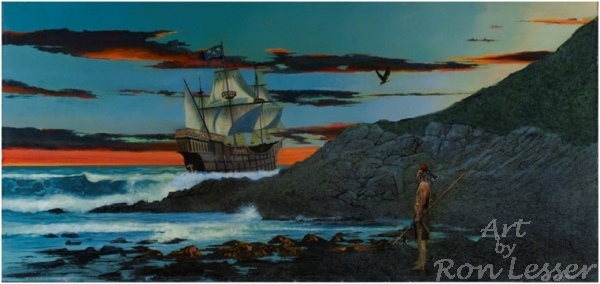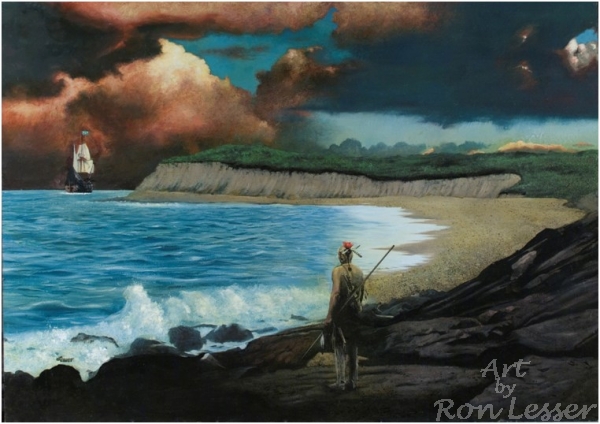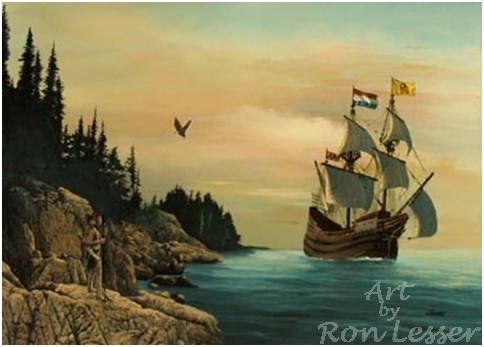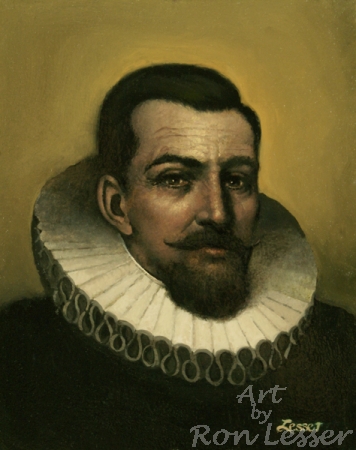Exploration
Verrazzano’s Ship, La Dauphine at Montauk Point #1
Medium: Oil on Panel, Size: 35"x16 1/4"
In January 1524, Giovanni da Verrazzano began a voyage of discovery to the New World on behalf of King Francis I, He explored the east coast of North America from Cape Fear, North Carolina to New York. Verrazzono enters New York Bay and harbor and the present day Hudson River. From there he sailed along Long Island Sound, following the coast of Long Island to Block Island, which is located just 14 miles east of Montauk Point.
At the time of European contact, the Lenape people (named the Delaware by Europeans) inhabited the western end of the Island, and spoke the Munsee dialect of the Algonquian language family. Giovanni da Verrazzano was the first European to record an encounter with these people when he entered what is now New York Bay in 1524. The eastern portion of the island was inhabited by speakers of the Mohegan-Montauk-Narragansett language group of the same language family, representing their ties to the aboriginal peoples inhabiting what is now Connecticut and Rhode Island. The area was central to the production of Wampum, providing the resources necessary for its creation.






CLICK ON MAIN IMAGE ABOVE FOR DETAILS.












